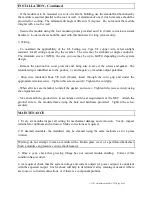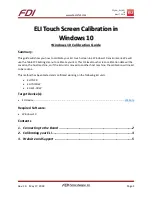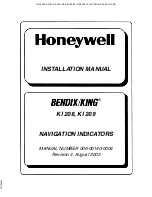
1/13/97 GoldenGenesis.DOC CJT Page 4 of 4
INSTALLATION - Continued
- If the module is to be mounted to a roof or wall of a building, use the standoff method whereby
the module is secured parallel to the roof or wall. A minimum of one (1) inch clearance should be
provided for cooling. The minimum tilt angle is fifteen (15) degrees. Do not mount the module
integral with a roof or wall.
- Secure the module using the four mounting holes provided and 1/4 (6mm) corrosion resistant
hardware. Lock washers should be used with this hardware for long term security.
3. Wiring
- To maintain the applicability of the UL Listing, use Type UF copper wire, rated sunlight
resistant, for all wiring exposed to the weather. The wire may be stranded or single conductor.
The minimum size is 12AWG; the size you use may be up to 8AWG depending on the system
design.
- Remove the junction box cover protective lid, being sure to save it, the screws and gasket. The
terminal strip is identified as to the positive (+) and negative (-) module output polarities.
- Strip wire insulation back 5/8 inch (16mm), insert through the cord grip and under the
appropriate terminal screw. Tighten this screw securely. Tighten the cord grip.
- When all wires are installed, re-install the gasket, and cover. Tighten lid screws securely using
the original screws.
- Size and earth the ground wire in accordance with local requirements or the NEC. Attach the
ground wire to the module frame using the hole and hardware provided. Tighten the screw
securely.
MAINTENANCE
1. Every six months inspect all wiring for mechanical damage and corrosion. Yearly, inspect
terminals for tightness and corrosion. Make corrections as required.
2. If deemed desirable, the module(s) may be cleaned using the same methods as for a glass
window.
Warning: do not attempt to clean a module with a broken glass cover or a perforated backsheet.
Such a module can present a serious shock hazard.
3. Once a year, check that growing foliage has not caused module shading. Correct if this
condition has occurred.
4. As required, check that the system voltage and current output (or power output) is consistent
with the expected output. Such a check will help to determine if array cleaning is needed, if there
are loose or corroded connections, or if there is a component problem.
























